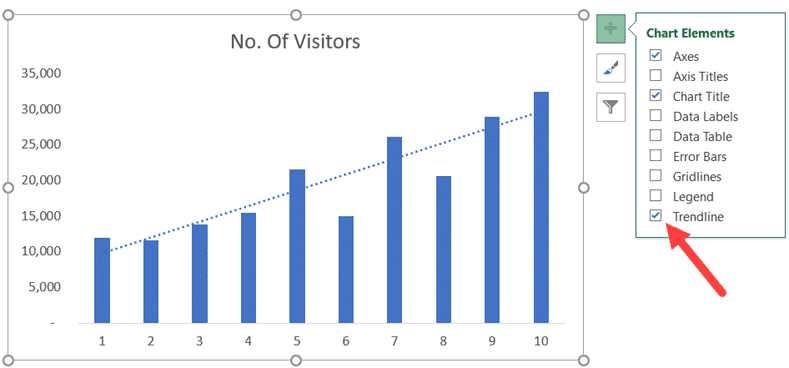

This time, the calculation is started in Row 6. Next, using the calculated velocity, I can calculate the acceleration (which is the first derivative of velocity) using the same method.

TREND LINES IN EXCEL 2016 HOW TO
How to Calculate First Derivative in Excel Since we need a 圓 and a y1, I start the calculation in Cell E5 and fill it down. How to Calculate Velocity in Excelįirst, I calculate the velocity as the derivative of the position data using the finite difference equation above. We’ll look at how they compare at the end. To make things easier for now, I’ve hidden the old acceleration and velocity data. As a check, we will compare the calculated acceleration data to the initial acceleration data. We can use the position data that was calculated by integrating velocity data in the previous post and use it to calculate both the velocity and the acceleration.

Let’s look at how to calculate a derivative in Excel with an example. This derivative formula is known as a central finite difference. So, if we wanted to find the slope at y 2 (z), we could use this calculation: However, it’s not the preferred method.Ī better estimation would be to calculate the average slope at the point of interest by averaging the slope directly before and after that point. The formula above returns the same result as the SLOPE function in Excel, so we could use that. This is called a one-sided estimation, because it only accounts for the slope of the data on one side of the point of interest. To use the finite difference method in Excel, we calculate the change in “y” between two data points and divide by the change in “x” between those same data points: The method used to perform this calculation in Excel is the finite difference method. Excel Derivative Formula using the Finite Difference Method You could import the data into Excel and calculate the velocity as the derivative of position with respect to time. So instead, you measured the position at various times, t. Say for instance, you performed some experiment where it was difficult to obtain the velocity directly. The classic example, of course, is position and velocity: It can be especially useful when you were not able to directly measure the quantity of interest, but were able to measure its integrand. This is the kind of derivative calculation that is typically performed on experimental data. How to Calculate First Derivative in Excel.Example: Calculate a Derivative in Excel.Excel Derivative Formula using the Finite Difference Method.


 0 kommentar(er)
0 kommentar(er)
